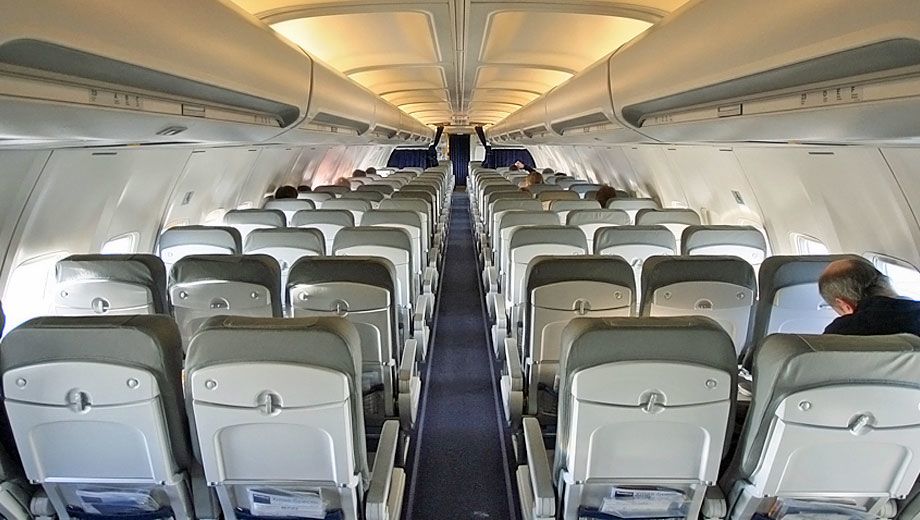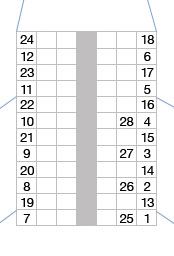The Steffen method: is this the future of boarding an aircraft?

A faster way of organising aircraft boarding has been tested in the US, and the results may surprise you.
The Steffen method (named after its inventor) ended up taking three minutes less to board a plane than the Group A, Group B, Group C method in a 72-passenger experiment.
Under the new system, passengers board starting at the far back of the plane, one seat at a time -- which makes perfect sense when you think about it -- but they skip every second row, and begin on one side of the plane before moving to the other side.
So the window seat in the last row on the right boards, then the window seat in the third to last row, then the window seat in the fifth to last row... and when the right side of the plane is done, it's time for passengers on the left side to start boarding from the rear (while also skipping every second row).
The idea is to avoid any two passengers trying to take up the same bit of aisle space at once as they try to cram themselves and their full carry-on allowance into planes that were built assuming that most people would check hold luggage for free.
Here's what that looks like in numbers:
Of course, it would be useful if the experiment had replicated an aircraft commonly in service.
Even a relatively small plane like an Airbus A320 (used by Jetstar and Air New Zealand) or a Boeing 737-800 (used by Qantas and Virgin Australia) has between 25 and 28 rows, depending on how tightly airlines cram in passengers. That means around 160 passengers.
The experiment only used 12 rows, with 72 passengers, so it's not entirely clear how well that will scale up for bigger planes, or for ones with more than one aisle.
It also omits the fact that many airlines need to give boarding priority to people travelling in classes higher than economy, their frequent flyer elite cardholders, and increasingly often people who pay for the privilege.
And while US low-cost airline Southwest makes its passengers line up in precise order of boarding (frequently referred to as the "cattle call" method), it's hard to imagine that going down well with the premium travellers Qantas and Virgin Australia are trying to attract.
The idea isn't likely to go down well with airports either, which make money hand over fist by having passengers wandering around their many duty free shops for as long as possible.
But could business class, elite frequent flyer cardholders and passengers who pay a pre-boarding fee go first, followed in order by economy passengers down the back?
What do you think -- organisational nightmare or pure genius? Share your thoughts in the comments below or talk to us on Twitter: we're @AusBT.

16 May 2011
Total posts 11
I'm all for anything that helps plane and deplane quickly, but on a Jet* plane full of pax going on holiday to the Goldcoast, it wouldnt work - families wouldnt split up to board for any reason.
27 Jul 2011
Total posts 42
I don't understand why it would be any quicker delaying boarding on one side of the plane after another - aren't they completely seperate spaces and shouldn't conflict?
27 Jul 2011
Total posts 42
Oops - didn't realise this test only used a single-aisle configuration.
Hi Guest, join in the discussion on The Steffen method: is this the future of boarding an aircraft?